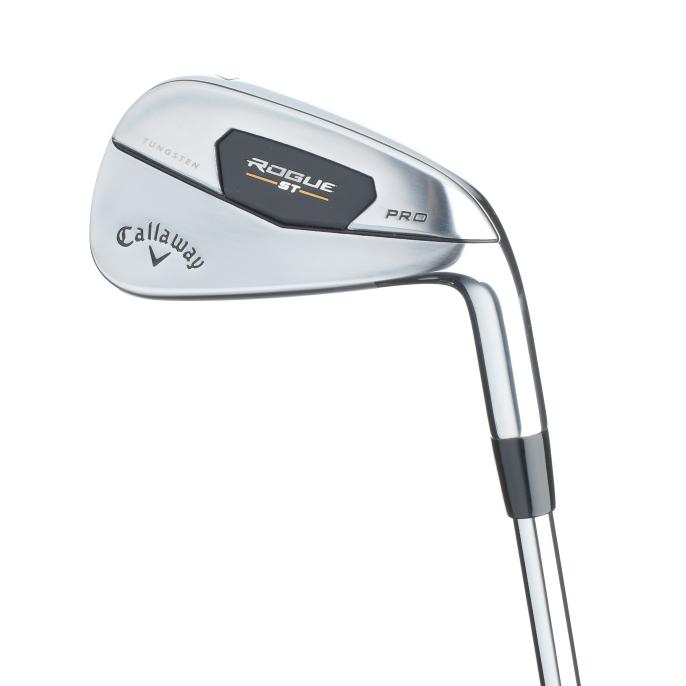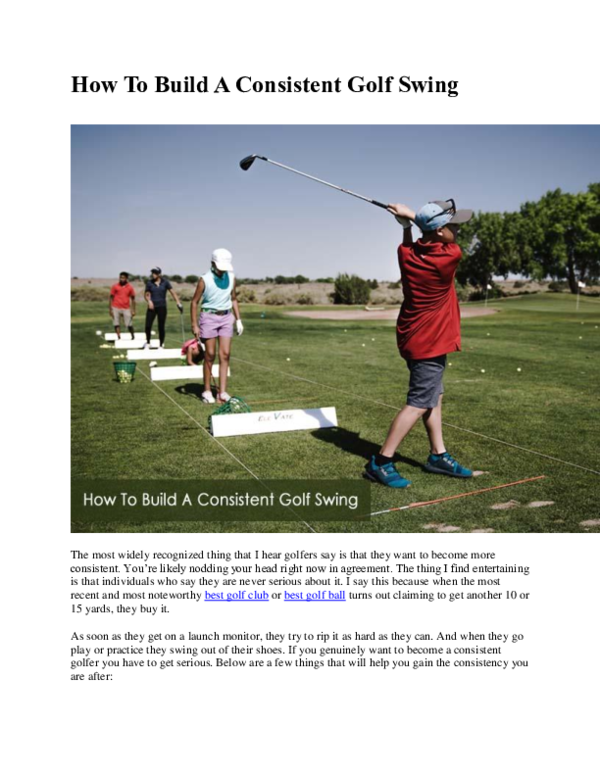
It's important to recognize that each shaft length has its benefits and drawbacks. A longer driver is more heavy, while a shorter driver is lighter and can be easier controlled. Shorter driver shafts can encourage a center point of contact on your clubface. This can allow for consistent shot patterns. For most players, a 44 inch driver shaft length will be sufficient. However, some golfers prefer a 42.5" shaft. Other players are more comfortable with 44 inches drivers.
45 inch driver shaft is easier to control
Most professional golfers use a 45-inch driver shaft length. If you want to improve your driving performance, you can use a shorter driver shaft than the 45-inch standard length for men. You'll lose some distance, but shorter shafts are easier for you to control. The proper fit can improve your game and reduce your chances of hitting an uncontrollable golf ball.

There are many factors that determine the length of a golf clubs shaft. Most of these factors are personal. The three most important factors are your height, swing speed and ball speed. A short-statured golfer may have trouble with a long-shafted player, while a taller person will be able to control a shorter driver. The length that you prefer depends on your height and swing speed.
It's easier to control the driver shaft at 43 inches
Increasing the length of your driver shaft can lead to longer distance and accuracy. A longer shaft can increase speed, while a shorter shaft can decrease it. Distance can be increased by adding an inch to the driver shaft. You should note, however, that an increase in the length of your driver shaft can lead to an increase in weight. A longer shaft will be easier to control.
When selecting a driver shaft, be sure to determine your personal preference and swing style. Driver shafts that are longer are generally more difficult to control and designed for golfers who are looking to make long drives. They're not recommended for taller golfers. Those who don't mind sacrificing control will probably be better off with a shorter shaft. But, it is important to remember that a shaft that's too long won't help you if your swing style isn't something you are used to.
It's easier to control the 44 inch driver shaft
Some golfers might prefer a longer shaft. However, others prefer shorter shafts. Drivers that are short are easier to control, and they increase spin rates. You need to choose the length that feels comfortable and makes it easier to hit consistent shots. A driver shaft that measures 44 inches is usually easier to control than a one that measures 45 inches. The maximum length of a driver shaft is 48 inches according to golf rules, though there are exceptions.

A longer driver shaft can increase distance, but it also makes it easier for you to miss the fairway. Some golfers may be okay with missing the fairway. However, most amateurs miss the fairway enough to get consistent low scores. You need to strike the right balance between accuracy, distance, and both. The benefits of playing on the fairway are not to be underestimated. If you can hit the ball further, that's great.
FAQ
Can I learn how to play golf?
Yes. There are many schools that offer instruction in golf. You will need to buy new equipment such as a set of clubs.
How is the game of golf scored?
The scorecard is broken down into four distinct categories: Stroke Play (Par 3, Par 4 and Par 5), and Stroke Play (Par 3 & Par 4). Each category can also be broken down into strokes. To attain par, a golfer must play 18 holes (Par72).
The lowest score wins.
What type of clubs should you use?
There are many different types of clubs. A driver is a heavy-metal club that allows players to hit the ball farther. You can also use woods, irons or wedges to play, as well as putters.
Woods are longer clubs made to allow players to play closer to the pin and still be able to reach green. These clubs are used for long drives or approaches.
Irons are shorter clubs that are designed to help players hit the ball closer to the pin. They are frequently used for chipping and putting.
Wedges are specialized clubs that are used to control the flight path of the ball. They are typically used for shots that require precise direction.
Putters are small clubs which can be used to roll the ball towards cups. They are used by players to make short putts.
The type and type of shot you wish to make will dictate the club you use. Different types of shots are better served by different clubs.
For example, drivers are useful for hitting the ball far away from the hole. Wooden woods are excellent for driving long distances. Irons are great for making short shots. Wedges are excellent at controlling the flight of the ball. Putters work well for rolling a ball into the hole.
What are the various types of golf courses available?
Golf courses come in all shapes and sizes. Some are designed specifically for beginners, while others cater to experienced players.
Some golf courses are close to lakes, rivers, mountains and forests. Some are located in urban areas. You will find everything from public golf courses to private estates.
How can I learn how to play golf?
Learning to play golf requires practice and patience. However, it's possible to improve your golf game over time. Here are some tips to help:
-
Practice regularly. Golf requires constant attention and concentration. You will not improve your skill level if you don't practice enough.
-
Play with people who know how to play. Playing with people can help you create your own style.
-
Before you practice, learn about golf. This will help you to understand what you should be working on.
-
Do not try to master all aspects of your game at once. Concentrate on one aspect in your game. One example is to work on your putting and chipping skills. This will help you feel more confident about your game.
-
Take lessons. Lessons can teach you important things like stance, swing speed, posture, etc.
-
Try new techniques. Experiment with new grips and stances.
-
Keep records. Keep track and log your scores. This will help you to see the areas you need to improve.
-
Join a local golf club. Many clubs offer lessons at no cost. Clubs often have welcoming members who are eager to help newcomers.
-
Locate a coach. You can get guidance from a professional coach on certain areas of your game.
What does a good swing look like?
Balance is the key to a successful swing on the golf course. Balance refers to being steady throughout all movement. When swinging the golf club, ensure your arms are relaxed but strong. Keep your shoulders straight and parallel to the target line.
Follow through by keeping your head still as you backswing. Swing gracefully and avoid jerking the wrists. You should not forcefully hit the ball. Instead, try to make smooth, fluid movements.
What's the difference between driving ranges and putting greens?
Driving ranges allow players to hit balls at distances between 50 and 300 yards. Players can practice their putting skills on putting greens.
Statistics
- In the United States, the number of people who play golf twenty-five times or more per year decreased from 6.9 million in 2000 to 4.6 million in 2005, according to the [51] (en.wikipedia.org)
- He shanked the first attempt, but it is estimated his second went more than 200 yards (180 m).[52]Golf courses worldwide. Below are the top 20 countries with the most golf courses as of 2019.[53]CountryNumber of (en.wikipedia.org)
- Buying a set of Titleist or Taylor-Made irons for nearly $1,000 is simply not necessary and likely a waste of money. (golficity.com)
- They do this by means of assessing and rating courses according to the average good score of a "bogey golfer," a player with a handicap of around 20. (en.wikipedia.org)
External Links
How To
How do you play better golf in windy conditions?
Golf is a game played outdoors in open spaces on well-kept grassy areas. It is one the most loved sports in the world. There are many kinds of golf courses in the world. They range from public parks and private clubs. Indoor golf can also be played, such as in shopping malls or indoor arenas. The game consists of a series of holes, where players must hit balls into them. Each hole has a tee box, fairway, rough, hazards (e.g., water), and green. You can choose to use a driver, wedge (long iron), or putter depending on what type of shot you are looking for. The rules of the course may require players to carry the balls a specific distance before they hit the green, or they may simply have to drop them in the cup. There are many factors that affect how a golfer hits the ball when playing outside. These conditions include speed, temperature and humidity.
There are two main types of winds: crosswinds and headwinds. Headwinds blow left to right and crosswinds from left to right. If the wind blows towards the golfer, he/she is playing against the wind. However, if the wind blows away from the golfer, he/she will hit with the wind. It is difficult to play in strong wind because the ball will fly further and higher. This makes it more difficult for players to control the ball's direction and trajectory. To compensate for these effects, players try to keep the club face perpendicular to the ground. They strike the ball with maximum force and contact so it is fully in contact with the ground. However, even though the ball flies lower in stronger wind, it travels farther due to increased air resistance.
Playing golf in the wind requires a lot of practice. Wind affects the flight path and trajectory of the ball. Good golfers should know the current wind conditions in their area. He/She will adjust their swing to match the wind conditions so they can hit the ball straight and without losing energy. It is also important to consider the direction of the wind. The wind doesn't always travel the same way in all directions. For example, the wind from the ocean tends to be quite light, but it's often stronger near shoreline. The wind blows the closest to the ground, in the same way. Because of these factors, the golfer must pay attention to the wind direction and intensity.
Golf in the wind is a constant adjustment process. It is important to be aware of the wind and adjust your swing accordingly. Learn how to read the winds and adjust your swing accordingly.